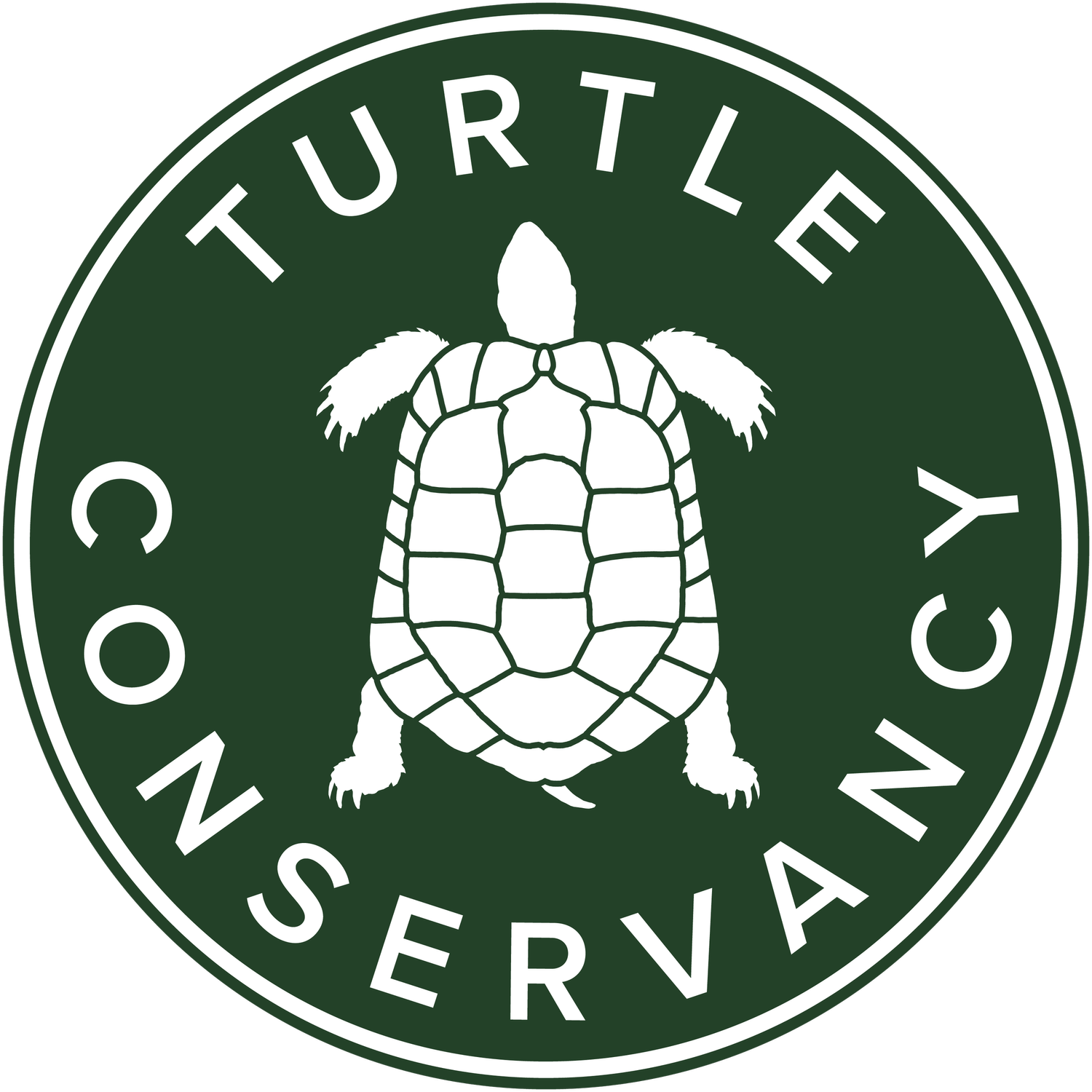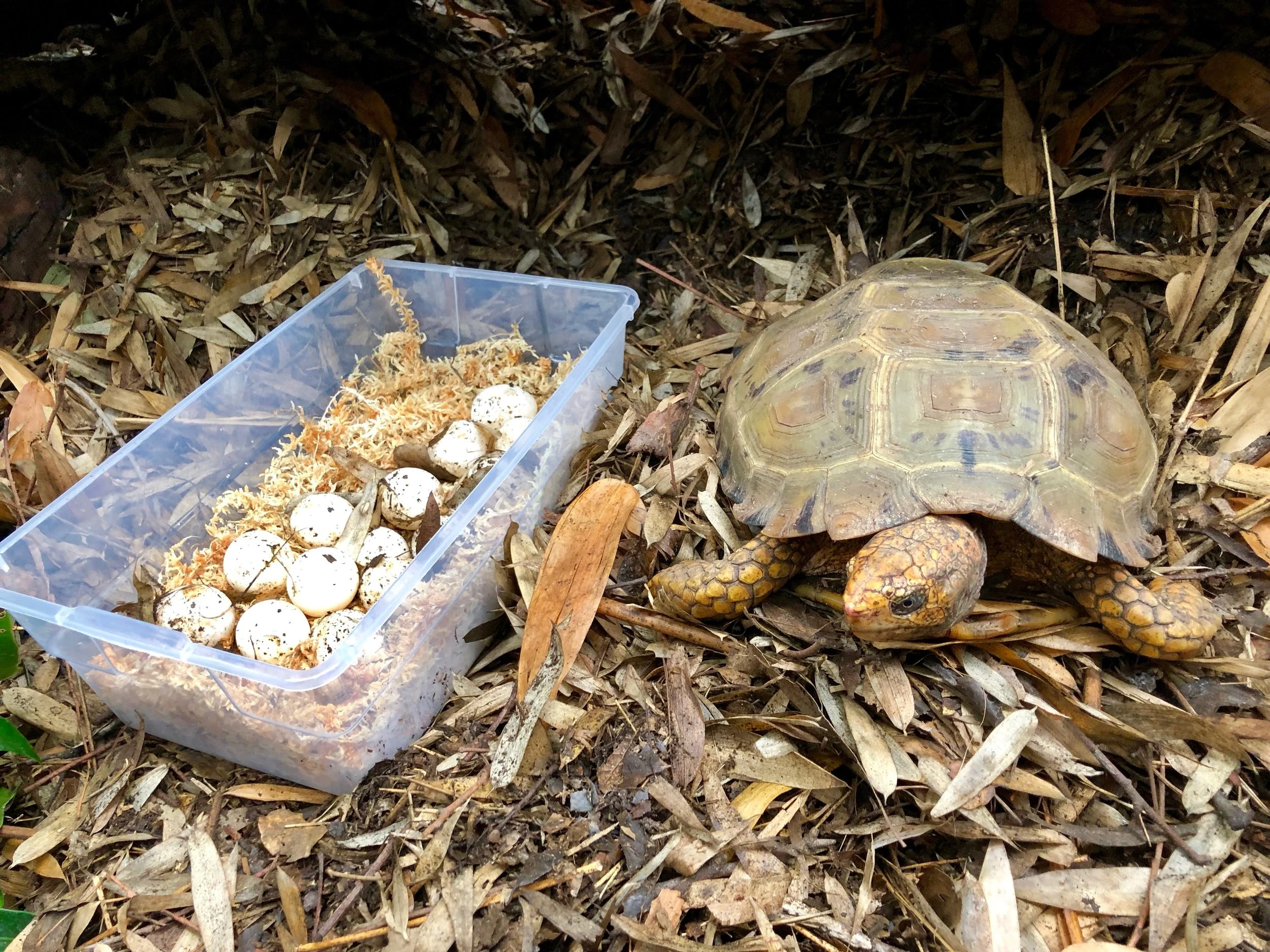The tortoises of the genus Manouria are the oldest forms of tortoises living today. These living dinosaurs include the Asian Giant Tortoises and the Impressed Tortoise. The Turtle Conservancy manages both of these species at our southern California Conservation Center, and this past month we were very excited to get record setting clutches of eggs from our tortoises.
The Impressed Tortoise, also called Manouria impressa, is a good example of a species occurring localized across a very large geographical range. This tortoise lives in Cambodia, China, Laos, Malaysia, Myanmar, Thailand and Vietnam, and was recently documented to extend into India. Described in 1882 by Günther, the tortoise is very discreet and elusive. It is currently assessed as Vulnerable in the IUCN Red List, though its next update may well rate it as Endangered.
Impressed Tortoises are found at very high elevations — we believe that it is in the top two of high altitude tortoises — in cool, humid forests. Through field studies, it has been discovered that the Impressed tortoise feeds primarily on various fungus species, as well as young bamboo shoots. They really love to spend time buried in the leaf litter and the females use the leaves to create the nest mound in which they lay eggs.
The Turtle Conservancy has been focused on Asian Giant Tortoises and Impressed Tortoises since our inception back in 2005. In 2011, we traveled to the mountains of Thailand to track these tortoises and collect data on their natural history. We were able to see 3 wild Impressed Tortoises during this trip. This tortoise is quite difficult to manage in captivity and even more difficult to breed, and we have successfully produced over 30 hatchlings over the years.
This year we have 14 Impressed Tortoise eggs that will be F2 offspring when they hatch, and 70 Asian Giant Tortoise eggs which are incubating right now! Fingers crossed for some hatchlings in approximately 3 months…





